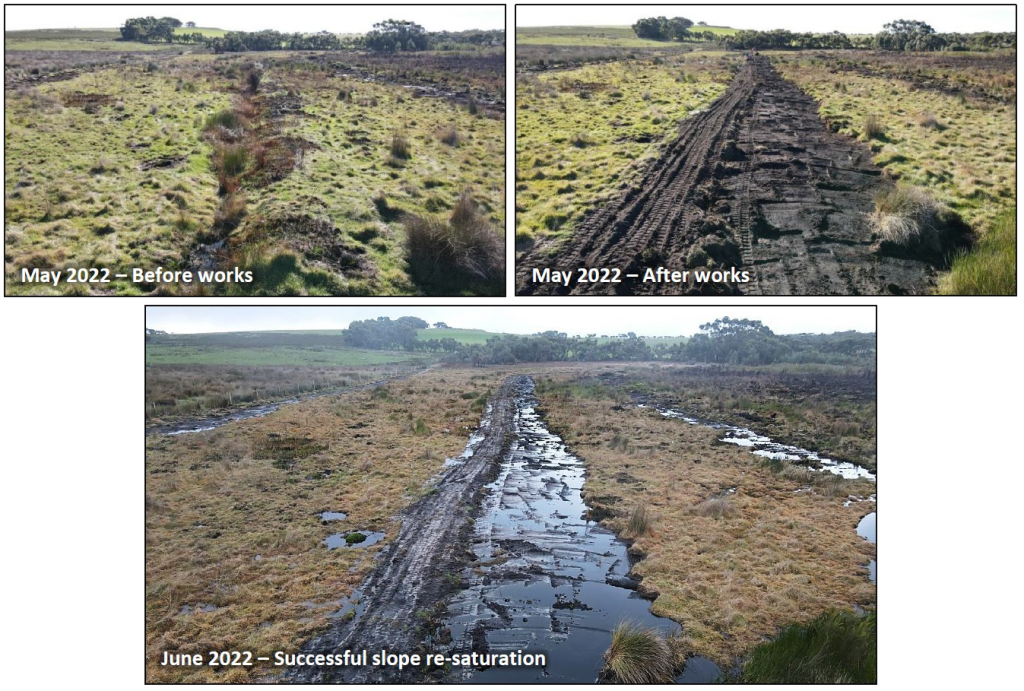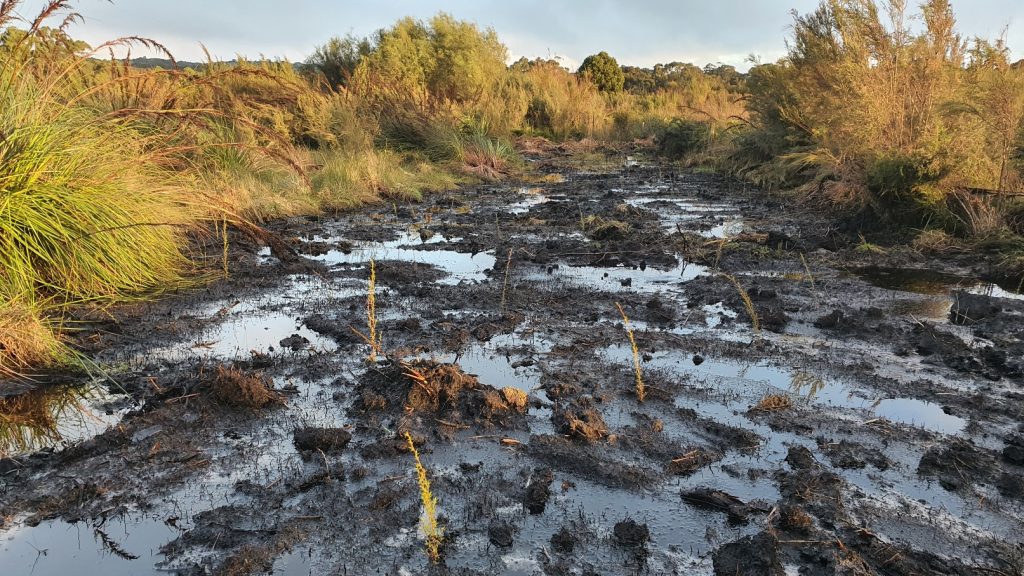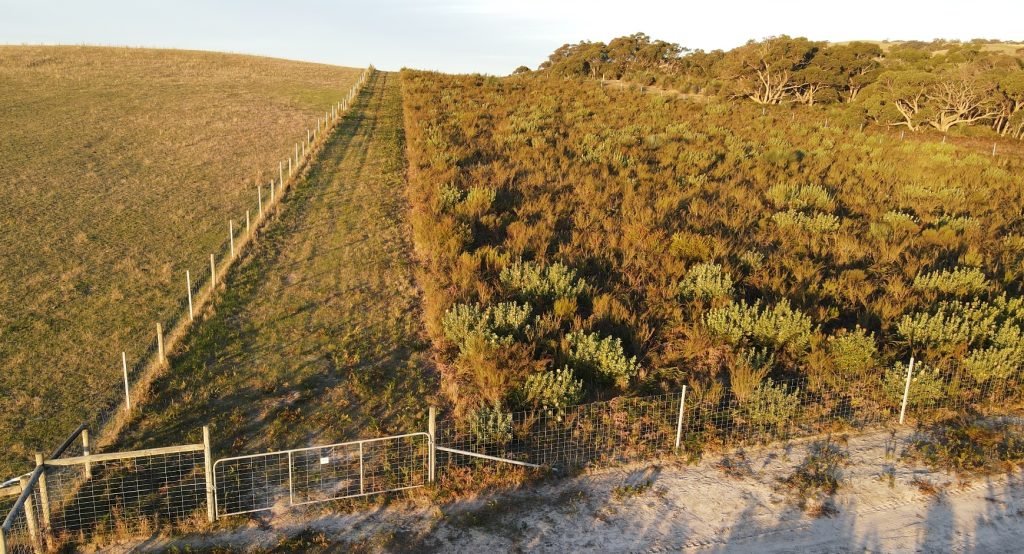An unfolding case study in habitat restoration – Stipiturus Conservation Park
To follow up last month’s story about Glenshera Swamp, this month we’re checking back in to see how things were looking after the first rains post-restoration works, as well as sharing our latest project summary (which was handed out at Swamp Fest 2022), and taking a look at the incredible success of dry heath revegetation works on the slopes above the swamp.
First up, the images below show the rapid re-saturation of the peat sediment at Glenshera Swamp, which can be found a considerable distance up the slopes to the northern side of the wetland. This process was accelerated by rainfall events not long after the completion of the works, and will now be sustained by slow seepage of shallow groundwater that will no longer be artificially drained away.

Thanks to the efforts of the Hills and Fleurieu Landscape Board, the National Parks and Wildlife Service and the Friends of Stipiturus and Hesperilla Conservation Parks, a significant amount of targeted revegetation with wetland species has already occurred within the disturbance footprints created by the autumn 2022 remedial works. Although we expect a natural regeneration response in many areas, this active revegetation will help to kick the recovery process along. In a few short years, rapid native vegetation recovery in areas like those shown will conceal the short term disturbance that was required to improve wetland hydrology.

To learn more about the story of the restoration works, please download this pdf (or view below). This is the information that was shared with members of the community who participated in the recent Swamp Fest planting day.
Stipiturus-CP-Autumn-2022-Update-Final-for-Swamp-Fest-June-2022Finally, and while we are talking about habitat restoration, it would be remiss of us not to share an example of the amazing success that has also been achieved further up the slopes at Stipiturus CP in several areas of drier sandy ground, where dry healthland has been successfully established through replanting. This project was managed by Randall Johnson, who previously worked with the AMLR NRM Board (now the Hills and Fleurieu Landscape Board).
Overcoming the challenge of overabundant kangaroo browsing was achieved by tall perimeter fencing (rather than via guarding individual plants), while the revegetation plantings themselves are at a very high density (and were supplemented over time by infill plantings) to replicate the structure of such heathlands in their natural state. While most grant funded revegetation projects can’t mimic these methods, due the high cost per hectare, it has to be said that “you get what you pay for” – after all, the results have been nothing short of spectacular! The birdlife is absolutely teeming in these areas, giving us a glimpse as to what is possible if enough resources are invested in habitat restoration. Enjoy the view!

